Did you know that bacon was invented thousands of years ago, prehistoric pigs weighed up to 400 kg, and pigs are one of the most intelligent animals? Join KnowAllAnimals to discover Interesting Facts About Pigs that you may not have known or heard of before. Let’s go!
1. Top 10 Interesting Facts About Pigs You Probably Didn’t Know
Pigs have long been considered one of the most familiar animals to humans. However, behind their gentle appearance and association with farming, these animals hold many fascinating secrets that not everyone knows. From their superior intelligence and special communication abilities to their unique daily habits, pigs never fail to surprise scientists and animal lovers alike.
In the list below, we will explore the Top 10 Interesting Facts About Pigs that might change the way you see them.
1.1. Pigs Were Domesticated Early
The first book on how to raise pigs was written by the famous Chinese emperor Fu Xi in 3468 B.C. However, according to experts, pigs were domesticated by humans about 6,000 years ago. The first pigs came to America in 1539 with the Spanish explorer Hernando de Soto.
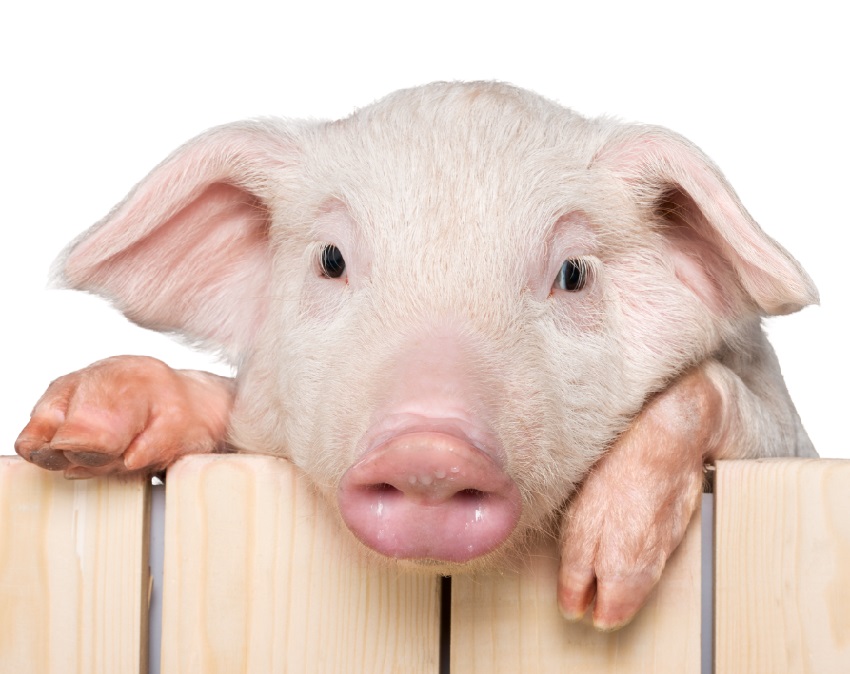
1.2. Bacon is an Ancient Food
Bacon is one of the oldest foods, having originated around 1500 B.C. The famous phrase “Bring home the bacon” originated in the 12th century when a church in England decided to award a flitch of bacon to any man who swore he had not argued with his wife for a year. At that time, this man would earn the respect of his community. Today, bacon production is a major industry, with nearly a billion tons of meat produced annually in the United States alone.
1.3. Prehistoric Pigs Weighed Over 400 kg
Entelodonts, also known as “bull pigs,” appeared about 16.3 million years ago. They were also called “killer pigs” or “hell pigs” in popular culture because they weighed over 400 kg (880 lbs), stood over 2 m (6.5 ft) tall, and had sharp teeth. They were considered fearsome predators in the American region.
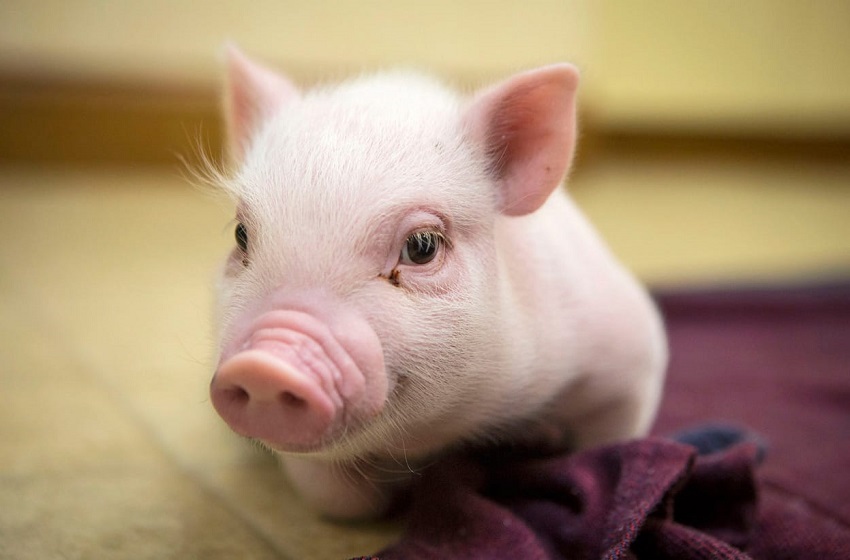
1.4. Pigs as Warriors
According to historians, pigs were used as warriors in ancient warfare. Alexander the Great used pigs against elephants because elephants were terrified of the sound pigs make. Pigs are also used to locate buried landmines in modern times because they have a keen sense of smell.
1.5. Pigs Are Very Intelligent
The famous former British Prime Minister Winston Churchill once said, “I am a great admirer of pigs. Dogs look up to us. Cats look down on us. Pigs treat us as equals.” And scientists rank pigs as being second only to chimpanzees and dolphins in intelligence. They are on the list of animals that can quickly form habits.
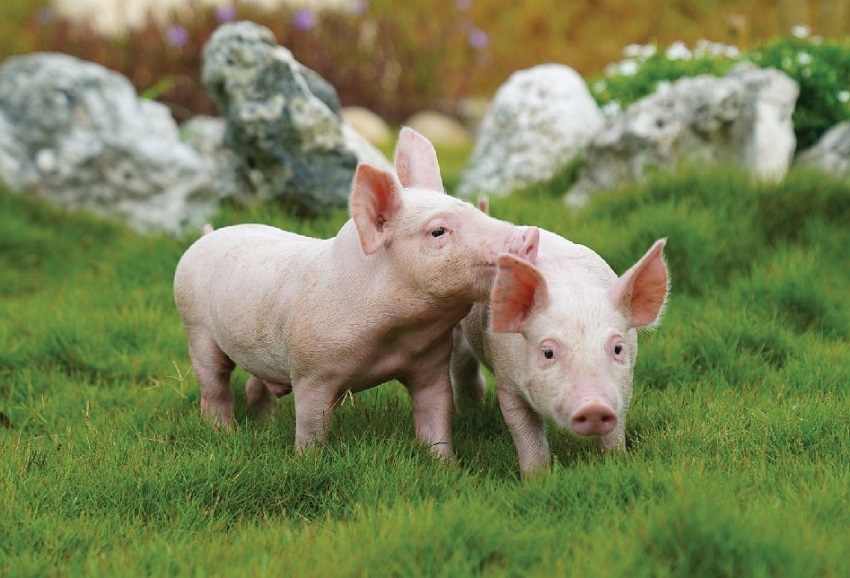
1.6. Pigs Don’t Have Sweat Glands
Pigs do not have sweat glands. This is why they often wallow in mud to cool down, as the mud evaporates slower than clean water. In modern farming, temperature control is a common method used to keep pigs comfortable.
1.7. Pigs Are Very Tidy
Pigs are very clean animals. Although they often wallow in mud to cool down, pigs are able to create their own private bathroom area in their pens or homes. They are also able to “build” a separate bathroom area for the entire community.
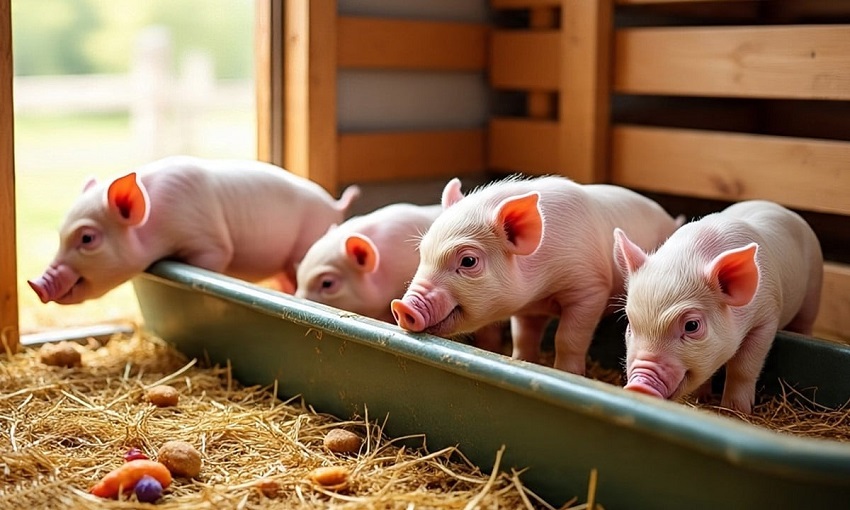
1.8. Pigs Oink Louder Than a Jet Engine
Although they have poor eyesight, pigs make up for it with their ability to be loud. A pig’s oink can reach up to 130 decibels, compared to 120 decibels for a jet engine. This is how you can understand why pigs were used in warfare.
1.9. Pigs Run at 17 km/h
Pigs are great marathon partners, as they can run at a speed of 17 km/h (10.5 mph). Given the size of their lungs relative to their body weight, this running speed is quite surprising.
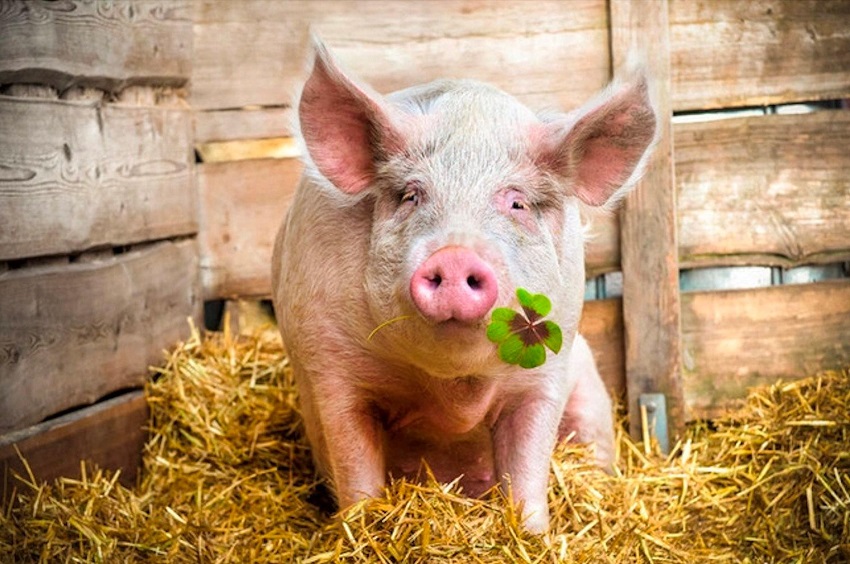
1.10. Pigs Can Save Human Lives
Pig heart valves are often used as replacements for patients with heart disease. For this reason, doctors hope that ongoing scientific research will be able to help treat diabetes because of the many similarities between human and pig pancreases.
1.11. Other Fun Facts About Pigs
The pig, or hog, is one of the 12 animals of the Chinese zodiac and is the last in the cycle, according to the Chinese, Vietnamese, Japanese, and Korean calendar systems.
Muslims are forbidden from eating pork (according to the Quran), and Jews are also forbidden from eating pork (according to the laws of Kashrut).
Former British Prime Minister Winston Churchill said: “A dog looks up to a man. A cat looks down on a man. But a pig looks him in the eye and treats him as an equal.”
The magic of turning humans into pigs has been used as a plotline in many stories. Zhu Bajie, a character in the Chinese classic Journey to the West, is a celestial god who is half-man, half-pig.
People who raise pigs as pets say that pigs are clean and use the bathroom in the right place. Pet pigs are easy to raise; they usually eat fresh vegetables and don’t require cooked food.
Some people even give their pigs a little bit of beer each day, perhaps just to see them get tipsy for fun.
Pet pigs are friendly toward people, always staying in the house or yard and not running far away. They don’t bite or jump on strangers; they just make cute little grunting noises.
But some pigs can be very aggressive. A few years ago, a wild boar charged through the glass door of an elderly German couple’s home in western Germany and jumped onto their bed, biting the homeowners.
A pig weighing 900 kg, measuring 2.5m long, and with a belly circumference of 2.23m, was raised by Mr. Xu Changjin for five years in Wafangdian City, China, and was recorded in the Guinness World Records book.
When people think of pigs, they usually think of a fat animal that only knows how to eat, sleep, and wait for the day it becomes meat. But pigs also play sports. Around the world, there are even Olympics for pigs to compete in.
Pig racing is a traditional festival that originated in the 17th century in Russia. This fun and exciting festival was revived in the early 20th century and takes place every year on March 20.
The pig racing festival is a time for Russian farmers to relax after a hard season of work. For the pig “athletes,” this is a chance to not only get a bucket full of fresh carrots but also to escape the slaughterhouse.
Pig racing is also popular in the Southern U.S., China, Thailand, and England. A pig sports federation has even been established, and they organize the Pig Olympics with three events: racing, swimming, and soccer.
The vice president of the World Pig Sports Federation, which has over 100 members, said: “Pigs that play sports won’t be eaten but will be used to produce a new generation of sports pigs.”
Pig racing in Vietnam is not as professional as in other countries, but it still attracts many curious people. Besides the Yang Bay Tourist Park in Khanh Hoa, Ho Chi Minh City has two places that organize pig racing: the Cu Chi Ecological Tourist Village and the Long Binh Stadium in District 9.
Animal rights activists in Taiwan have asked the government to ban the super-fat pig competition. They claim that this competition is too inhumane. The competing animals are fattened to the point where they can no longer walk, with some weighing nearly a ton. After winning, the animal is sacrificed. These competitions are part of the beliefs of an ethnic minority in Taiwan.
A dish that was once served to Chinese emperors at banquets is Fuzhou suckling pig. The meat is fragrant from a type of tuber, similar to a yam, that grows on the hills of Zhuxi. After the hair is singed off, these pigs are marinated with various valuable herbs for three days and then steamed.
In the Iberian Peninsula the mountainous region between Spain and Portugal—black Ibérico pigs, also known as Pata Negra (black hoof), are raised. This is a breed of pig with exceptionally high-quality meat that is raised using a special method, which is to let them roam freely on grasslands scattered with oak trees. It is from eating acorns that no other pig has meat as delicious as the Ibérico pig. Hundreds of years ago, Ibérico pigs were used to make ham and cured pork legs, which were so delicious that a leg of pork cured for 24 to 36 months could cost nearly 50 million Vietnamese dong.
The benefits that pigs bring are immense: from the food they provide, the materials they produce for essential items, to medicinal ingredients, and even pig hearts can be used to replace damaged human hearts.
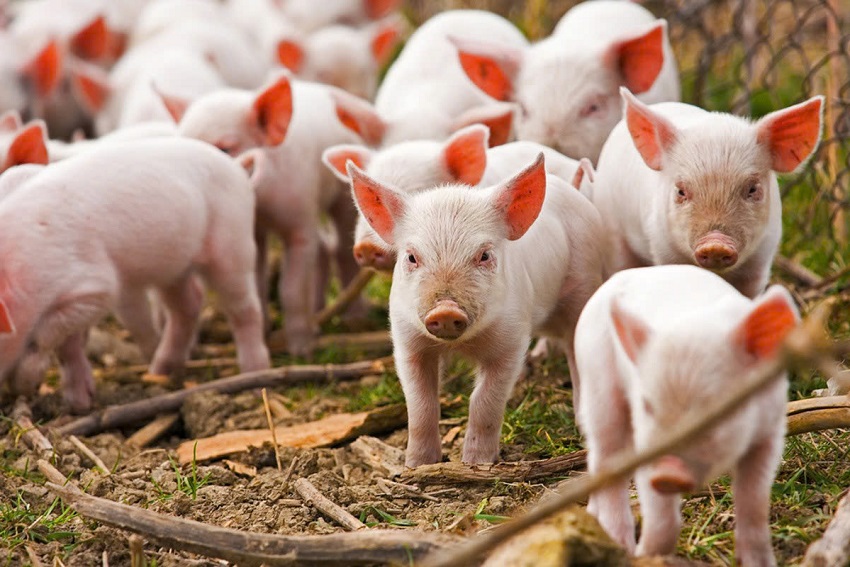
2. FAQs
1. Is there a difference between “heo” and “lợn”?
Answer: According to the article, “heo” and “lợn” are simply different Vietnamese names for the same animal. Some people jokingly say that “a lợn eats corn, while a HEO eats maize” to create a linguistic difference.
2. Are pigs clean and easy to raise?
Answer: Yes, the article states that pigs, especially pet pigs, are considered clean and know how to relieve themselves in the correct spot. They can eat fresh vegetables and don’t require fancy cooked meals.
3. Has there ever been an unusually large record-holding pig?
Answer: Yes. The article mentions a pig weighing 900 kg, measuring 2.5 m long, with a belly circumference of 2.23 m, that was raised in China for five years and was recorded in the Guinness World Records book.
4. Can pigs participate in “sports” or competitions?
Answer: Yes. There are pig races around the world, and there is even a “Pig Olympics” with events like running, swimming, and soccer.
5. Which pig breed is famous for its exceptional meat quality?
Answer: The article mentions the black Ibérico pig (Pata Negra) from the Iberian Peninsula (Spain and Portugal). This breed is raised free-range and eats acorns, which gives its meat a delicious flavor. It’s famously used for ham and cured pork legs.
3. Conclusion
Pigs are not just familiar animals in human life; they also hold many surprising and fascinating secrets. From their intelligence and adaptability to their cleanliness and strange records, pigs deserve to be seen in a new and more positive light. We hope that with these Interesting Facts About Pigs, you have gained more useful knowledge and a different perspective on this animal that is so close to us.



